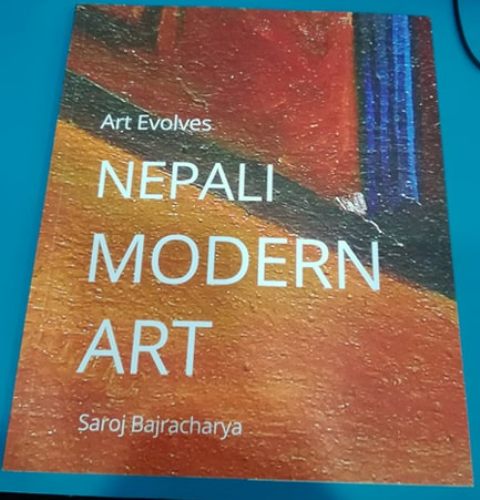Trishna Singh Bhandari, founder of Mithila House, claims that most Nepalis have a very narrow idea of Mithila art. According to Singh, people often think Mithila art is just wall art and paintings with side-turned faces when it’s actually so much more than that. It was to bring about a shift in that mindset that Singh founded Mithila House. She wanted to promote this exquisite, traditional form of art in all its glory.
“I realized that most people in Kathmandu and even other parts of Nepal don’t know much about Mithila art or appreciate it for what it is and wanted to change that,” says Bhandari who is originally from Mahottari. Thus, developing a platform that would propel this form of ancient art into mainstream attention became crucial.
To start with, Bhandari took to uploading pictures of products with customized Mithila art painted on them on Facebook. After receiving a lot of positive feedback from her friends and family, she finally launched Mithila House in early June this year. Bhandari, who previously handled Environmental Law at ICIMOD, mentions that she had only started this as a hobby but now that it has turned into a full-fledged business and she’s investing all her energy into it. As of now, Bhandari is fully focused on developing Mithila House and promoting Mithila art through it.
Currently, the brand sells everyday items like mugs, water bottles, boxes, lanterns, bags, kettles and baskets among other things. All these items come with hand painted Mithila art on them. Mithila House also has a line of clothing that includes items like kurtas, saris and t-shirts, again with hand painted Mithila art designs. Additionally, they are open to making customized pieces and they will customize anything a customer wants them to.
‘Art Evolves: Nepali Modern Art’: Review

Furthermore, Mithila House also has an ongoing ‘Make your own sari’ scheme where customers can choose a sari from their collection as well as a Mithila art design for it.
For all of this, Mithila House has several independent artists working with them right now. While a few of them are artists who specialize in Mithila art, others are contemporary artists who have learned to incorporate Mithila art into their creations.
Finding artists who can work for them has actually been the most challenging part of running Mithila House, according to Bhandari. She mentions that during the first few weeks, she had employed a few stay at home mums who grew up in and around Janakpur and were thus well versed in Mithila art.
Their work was good and they were being paid on a per order basis. But because all of them had children and their husbands weren’t around either, they had difficulties balancing work and household responsibilities. Thus they often couldn’t complete the pieces they were working on within the deadline. But she has since turned them into salary workers and all the current artists are very punctual and efficient.
The outlet for Mithila House is located in Bhanimandal in Lalitpur. But the brand’s products are also displayed at Everything Nepali, a concept store located in Baber Mahal Revisited. Moreover, interested customers can also order or buy their products online through their social media pages—namely Facebook and Instagram. Bhandari reveals that most orders and purchases are made online than at their outlets.
Of late, Mithila House has also taken on a few decor assignments at a few restaurants. Bhandari states that although this is a new project for the Mithila House team, she and her team are very excited to be working on this. Another project that Mithila House launched a couple of months ago was their Mountain Meets Plains initiative where they brand painted Mithila art on utensils that are commonly used in the mountains. “It was an idea I came across during a meeting at a Thakali eatery. We promoted this initiative as a platform for cultural exchange among Nepalis living in different parts of the country,” says Bhandari.
The reason why Bhandari emphasizes hand painting a lot is because Mithila art started out with hand painting and also because its essence lies in that. She claims that doing this gives continuity to the culture and tradition that is associated with this form of art.
Time and again, the Mithila House team also organizes workshops and classes for people who are interested to learn this style of art. They bring in professional artists from Janakpur for this and devise classes focusing on a particular group of people at a time (Like classes for children and teens, etc.).
Bhandari further reveals that sometime in the future, she wants to open a school that teaches Mithila art in depth or collaborate with other art schools in Kathmandu to draw up a course on Mithila art. “This way, we can teach more people about this form of art and ensure the tradition continues for generations to come,” concludes Bhandari.








































